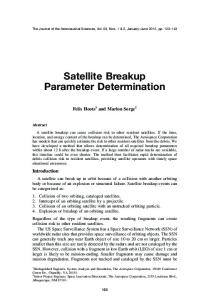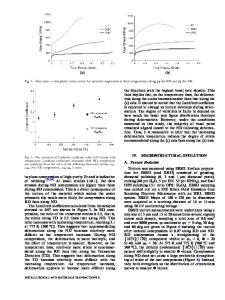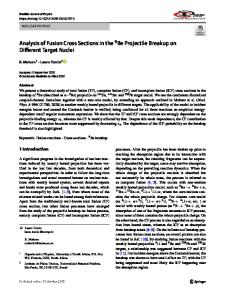Breakup of Rodinia
- PDF / 751,188 Bytes
- 5 Pages / 595.276 x 790.866 pts Page_size
- 90 Downloads / 403 Views
BREAKUP OF RODINIA
Wignall, P., 1994. Black shales. Oxford Monographs in Geology and Geophysics, 30, 1–127. Wilms, R., Sass, H., Köpke, B., Köster, J., Cypionka, H., and Engelen, B., 2006. Specific bacterial archaeal, and eukaryotic communities in tidal-flat sediment along a vertical profile of several meters. Applied and Environmental Microbiology, 72, 2756–2764.
Cross-references Aerobic Metabolism Anaerobic Oxidation of Methane with Sulfate Anaerobic Transformation Processes, Microbiology Archaea Bacteria Biological Control on Diagenesis: Influence of Bacteria and Relevance to Ocean Acidification Biomarkers (Molecular Fossils) Biomarkers (Organic, Compound-Specific Isotopes) Biosignatures in Rocks Carbon (Organic, Cycling) Carbon (Organic, Degradation) Critical Intervals in Earth History Iron Sulfide Formation Isotopes and Geobiology Microbial Degradation Sediment Diagenesis - Biologically Controlled Sulfate-Reducing Bacteria Sulfur Cycle Sulfur Isotopes
BREAKUP OF RODINIA Zheng-Xiang Li Curtin University of Technology, Perth, WA, Australia
Synonyms Break-up of the supercontinent Rodinia Definition Supercontinent Rodinia. The earth’s geodynamic system periodically pushes almost all continents together to form a single landmass – a supercontinent. The best known supercontinent is Pangaea (or Pangea) that existed between 320 and 170 Ma. A less known supercontinent Rodinia is believed to have existed between 900 Ma (some believe 1,000 Ma) and 750 Ma. The name “Rodinia” was coined by McMenamin and McMenamin (1990) from the Russian word “rodit” meaning “to beget” or “to give birth.” McMenamin and McMenamin (1990, p. 95) considered Rodinia to have been the supercontinent that spawned all subsequent continents, while “the edges (continental shelves) of Rodinia were the cradle of the earliest animals.” Three landmark paper in 1991 (Moores, 1991; Dalziel, 1991; Hoffman, 1991) triggered a global debate on this supercontinent hypothesis. The configuration of Rodinia is still controversial today, with some alternative reconstructions given in Hoffman (1991), Pisarevsky et al. (2003), and Li et al. (2008) (Figure 1).
The breakup of Rodinia: introduction Although it is widely accepted that Rodinia broke apart during the latter half of the Neoproterozoic era (1,000– 542 Ma) and that some fragments reassembled by the early Cambrian (ca. 530 Ma) to form Gondwanaland (Hoffman, 1991), our knowledge of the timing of the breakup events and the processes involved is still sketchy. Record of Rodinia breakup The breakup of Rodinia was recorded both geologically and geophysically. The most important geological records of the breakup process are globally widespread continental rift deposits and related magmatism, and records of the geological transition from continental rifting to passive margin deposits where rifting succeeded to form new oceans. One of the best matches of rifting records between continents is that between southeast Australia and South China, where episodes of rift-related magmatism at ca. 825 Ma, 800 Ma, 780 Ma, an
Data Loading...











